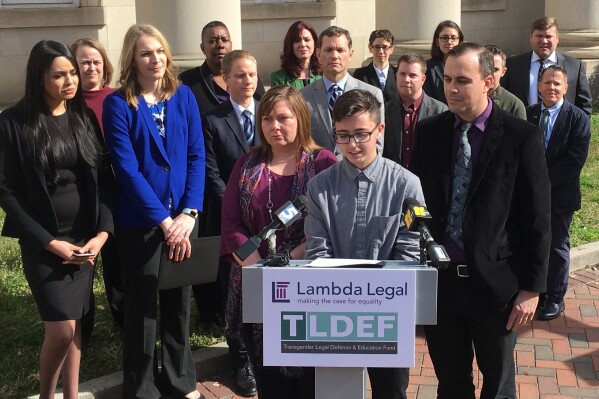Medicaid coverage restored to about a half-million people after computer errors in many states
JEFFERSON CITY, Mo. (AP) — About 500,000 people who recently lost Medicaid coverage are regaining their health insurance while states scramble fix computer systems that didn’t properly evaluate people’s eligibility after the end of the coronavirus pandemic, federal officials said Thursday.
The computer issues affected people in 29 states and the District of Columbia and likely included a significant number of children who should have been eligible for Medicaid at higher income levels even if their parents or caregivers were not, according to the federal Centers for Medicare and Medicaid Services.
All states are undertaking a massive review of their Medicaid rolls after a three-year, pandemic-era prohibition on ending coverage expired this spring. While the freeze was in effect, Medicaid enrollment swelled by nearly one-third, from 71 million people in February 2020 to 94 million in April 2023.
States often use computer programs as a first step in determining whether people should be automatically re-enrolled in Medicaid. If their eligibility is unclear, states then attempt to contact people by mail, phone, text or email seeking additional information. If that doesn’t work, people are dropped from the rolls in what CMS describes as a “procedural termination.”
 Appeals court takes up transgender health coverage case likely headed to Supreme Court
Appeals court takes up transgender health coverage case likely headed to Supreme Court
 Gates Foundation commits $200 million to pay for medical supplies and contraception
Gates Foundation commits $200 million to pay for medical supplies and contraception
 New Mexico official orders insurance companies to expand timely access to behavioral health services
New Mexico official orders insurance companies to expand timely access to behavioral health services
In late August, CMS warned that some state computer systems were flagging entire households for further information — and dropping all family members when no one responded — instead of reviewing each individual separately and automatically renewing children who remain eligible. It sent letters to all states asking them to verify their compliance with federal rules.
For states in violation, federal officials required them to retroactively restore Medicaid coverage to those affected and to halt procedural terminations until their systems are fixed.
Some state Medicaid directors said Thursday that they were unaware they had been doing things incorrectly.
“It was never clear that this was against the rule or against the regulation, because if it was, we would have been doing it differently a long time ago,” said Cindy Beane, commissioner of the West Virginia Bureau for Medical Services and president of the National Association of Medicaid Directors.
Fewer than 5,500 children were affected by the problem in West Virginia and are having their coverage restored, she said.
The impact was larger in New York. Around 70,000 people, including about 41,000 children, were inappropriately dropped from Medicaid in June, July and August because of automation issues and will have their coverage reinstated for an additional 12 months, beginning as soon as Friday, New York Medicaid Director Amir Bassiri said.
He said state workers will manually review eligibility for individuals within households until contractors can create a permanent fix early next year.
Officials in Nevada and Pennsylvania each estimated that more than 100,000 people may have lost coverage because of shortcomings in their automated renewal systems, according to data distributed by CMS.
But no more than a couple thousand people were affected in Nebraska, said state Medicaid Director Kevin Bagley. And only about 4,800 — none of whom were children — were affected in Massachusetts, said that state’s Medicaid director, Mike Levine. Both nonetheless expressed frustration that federal officials hadn’t highlighted the requirement sooner.
“I would have loved to have learned about this a year ago,” Levine said. “But in either case, we’re learning now and moving forward. It will just be another enhancement to our process.”
Automated eligibility systems vary by state and can be technically challenging and costly to change, said Kate McEvoy, executive director of the National Association of Medicaid Directors.
Some states expect to complete system improvement before the end of September while others expect it to take several months, said Daniel Tsai, director of the CMS Center for Medicaid and Children’s Health Insurance Program Services.
More than 7 million people have been dropped from Medicaid since the pandemic-era protections ended, according to the nonprofit health policy organization KFF. Some states have been more aggressive than others in halting coverage for those who don’t respond to renewal notices.
“There are states that are approaching Medicaid rolls with the idea being `the rules are the rules, and consumers need to bear the burden of playing by the rules,’” said David Adkins, executive director of The Council of State Governments. Other states “are looking at it as consumers with health care are a good thing, so we should be trying to figure out how do we find ways to keep people who are truly qualified on Medicaid.”
Disclaimer: The copyright of this article belongs to the original author. Reposting this article is solely for the purpose of information dissemination and does not constitute any investment advice. If there is any infringement, please contact us immediately. We will make corrections or deletions as necessary. Thank you.






